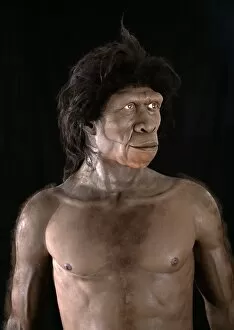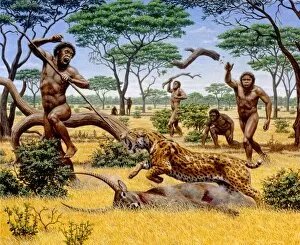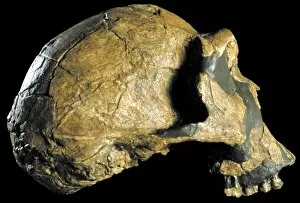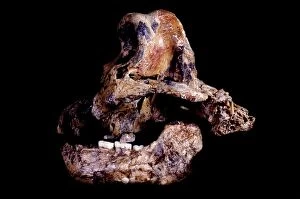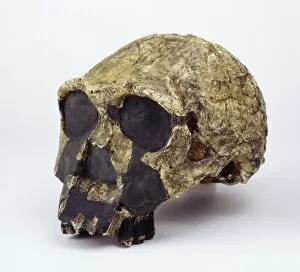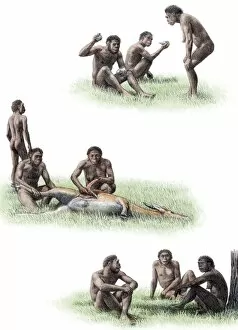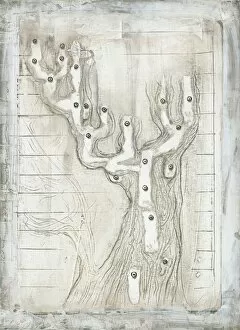Homo Ergaster Collection
"Homo ergaster: Unraveling the Enigmatic Hominid through Skulls and 3D Computer Images" Delving into the depths of human evolution
All Professionally Made to Order for Quick Shipping
"Homo ergaster: Unraveling the Enigmatic Hominid through Skulls and 3D Computer Images" Delving into the depths of human evolution, Homo ergaster emerges as a captivating figure. Through hominid skulls and cutting-edge technology like 3D computer images, we can now piece together this ancient species' story. Often referred to interchangeably with Homo erectus, Homo ergaster is believed to be one of our earliest ancestors. The Turkana boy (KNM-WT 15000) serves as an iconic representation of this species - a fossilized skeleton that provides invaluable insights into their physical characteristics. While both males and females belonged to the Homo ergaster lineage, it is fascinating to explore the distinctions between them. Artwork C013/9576 showcases Homo ergaster females and young, shedding light on their appearance and family dynamics. As we delve deeper into their world, glimpses of daily life come alive. A vivid depiction in artwork C015/6927 reveals a hunting group of Homo ergasters - showcasing their cooperative nature and survival strategies. Examining specific cranial remains such as KNM-ER 3733 (C015/6928), SK-847, and SK-15 allows us to unravel more about their physical attributes. These skulls provide clues about brain size, facial features, and evolutionary adaptations unique to Homo ergasters. Beyond individual specimens lies the grandeur of their landscape – vast plains stretching across time immemorial. Captivating artwork captures these ancestral habitats where early humans roamed freely in search of sustenance (Homo ergaster landscape). The cranium KNM-ER 3733 (C016/5095) further deepens our understanding by offering intricate details about skull structure while its counterpart KNM-ER 3733 (C016/5094) adds another layer of complexity for researchers seeking comprehensive knowledge. With each discovery comes a renewed sense of awe and appreciation for our ancient ancestors.



